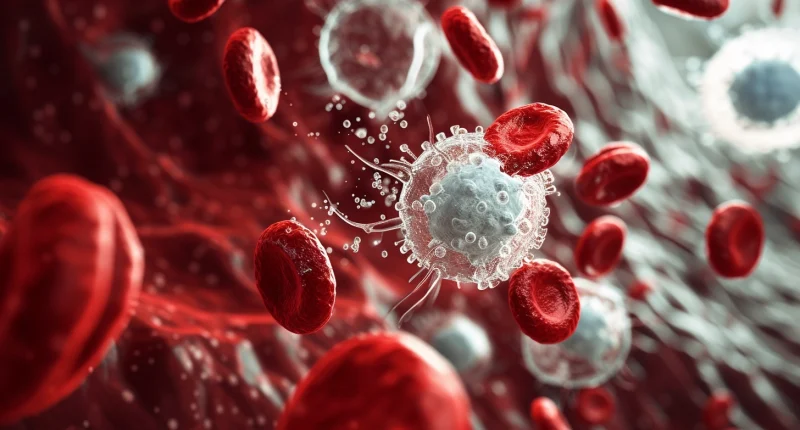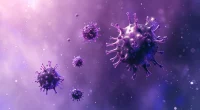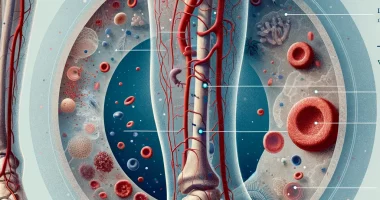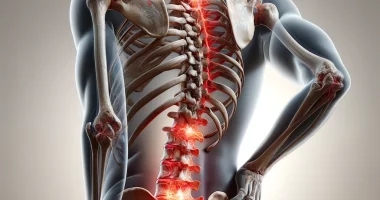Acute lymphoblastic leukemia (ALL)
Acute lymphoblastic leukemia is a malignant lesion of the hematopoietic system accompanied by an uncontrolled increase in the number of lymphoblasts. It is manifested by anemia, symptoms of intoxication, enlargement of lymph nodes, liver and spleen, increased bleeding, and respiratory disorders. Due to a decrease in immunity in acute lymphoblastic leukemia, infectious diseases often develop. The CNS may be affected. Diagnosis is made based on clinical symptoms and laboratory tests, treatment – chemotherapy, radiotherapy, and bone marrow transplantation.
General information
Acute lymphoblastic leukemia (ALL) is the most common childhood cancer. The share of ALL is 75-80% of the total number of cases of diseases of the hematopoietic system in children. The peak incidence is between the ages of 1 and 6 years. Boys suffer more often than girls. Adult patients suffer 8-10 times less often than children. In pediatric patients, acute lymphoblastic leukemia occurs primarily; in adults, it is often a complication of chronic lymphocytic leukemia. In its clinical manifestations, ALL is similar to other acute leukemias. A distinctive feature is a more frequent lesion of the brain and spinal cord membranes (neuroleukemia), which develops in 30-50% of patients in the absence of prophylaxis. Treatment is provided by specialists in oncology and hematology.
According to the WHO classification, two ALL types are distinguished: B-cell and T-cell. B-cell acute lymphoblastic leukemia accounts for 80-85% of cases. The first peak of incidence occurs at the age of 3 years. After that, the likelihood of developing ALL increases after age 60. T-cell leukemia accounts for 15-20% of the cases. The peak incidence is at the age of 15 years.
Causes of acute lymphoblastic leukemia
The immediate cause of acute lymphoblastic leukemia is the formation of a malignant clone, a group of cells that can multiply uncontrollably. A clone is formed as a result of chromosomal aberrations: translocation (exchange of regions between two chromosomes), deletion (loss of a chromosome region), inversion (reversal of a chromosome region), or amplification (formation of additional copies of a chromosome region). It is assumed that genetic disorders causing the development of acute lymphoblastic leukemia occur in the fetal period, but additional external circumstances are often required to complete the process of malignant clone formation.
Among the risk factors for acute lymphoblastic leukemia, radiation exposure is usually the first to be mentioned: living in an area with increased levels of ionizing radiation, radiotherapy in treating other cancers, and numerous radiological examinations, including in utero. The level of association and the evidence of correlation between various radiation exposures and the development of acute lymphoblastic leukemia varies widely.
The likelihood of acute lymphoblastic leukemia increases with maternal exposure to certain toxic substances during gestation and certain genetic anomalies (Fanconi anemia, Down syndrome, Schwachman syndrome, Klinefelter syndrome, Wiskott-Aldrich syndrome, neurofibromatosis, celiac disease, hereditary immune disorders), a family history of cancer and the use of cytostatics.
Symptoms of acute lymphoblastic leukemia
The disease develops rapidly. By the time of diagnosis, the total mass of lymphoblasts in the body can be 3-4% of the total body weight due to the rapid proliferation of cells of the malignant clone during the previous 1-3 months. Within a week, the number of cells approximately doubles. There are several syndromes characteristic of acute lymphoblastic leukemia: intoxication, hyperplasticity, anemia, hemorrhages, and infection.
The intoxication syndrome includes weakness, fatigue, fever, and weight loss. Fever can be provoked by underlying disease and infectious complications, especially in neutropenia. Hyperplastic syndrome in acute lymphoblastic leukemia is manifested by an increase in lymph nodes, liver, and spleen (as a result of leukemic infiltration of organ parenchyma). When parenchymatous organs are enlarged, abdominal pain may appear. Increased bone marrow volume and infiltration of periosteum and joint capsule tissues may cause bone and joint pain.
The presence of anemic syndrome is evidenced by weakness, dizziness, pallor of the skin, and increased heart rate. The cause of hemorrhagic syndrome in acute lymphoblastic leukemia is thrombocytopenia and thrombosis of small vessels. Petechiae and ecchymoses are detected on the skin and mucous membranes. There is increased bleeding from wounds and scratches, hemorrhages in the retina, gingival and nasal bleeding. Some patients with acute lymphoblastic leukemia have gastrointestinal bleeding accompanied by bloody vomiting and tarry stools.
Immune disorders in acute lymphoblastic leukemia are manifested by frequent infection of wounds, scratches, and injection marks. Various bacterial, viral, and fungal infections may develop. With increased mediastinal lymph nodes, respiratory disorders are noted due to decreased lung volume. Respiratory failure is more often found in T-cell acute lymphoblastic leukemia. Neuroleukemia provoked by infiltration of the spinal cord and brain membranes is often noted during relapses.
When the CNS is involved, positive meningeal symptoms and signs of increased intracranial pressure (swelling of optic discs, headache, nausea, and vomiting) are detected. Sometimes, CNS lesions in acute lymphoblastic leukemia are asymptomatic and diagnosed only after cerebrospinal fluid examination. In 5-30% of boys, infiltrates appear in the testicles. In patients of both sexes, purple-blue infiltrates (leukemids) may occur on the skin and mucous membranes. In rare cases, effusion pericarditis and renal dysfunction are observed. Cases of intestinal lesions have been described.
Considering the peculiarities of clinical symptomatology, four periods of acute lymphoblastic leukemia development can be distinguished: initial, peak, remission, and terminal. The duration of the initial period is 1-3 months. Non-specific symptoms predominate, such as lethargy, fatigue, deterioration of appetite, subfebrile, and increasing skin pallor. Headaches, abdominal pain, bone and joint pain are possible. All of the above characteristic syndromes are detected at some point in acute lymphoblastic leukemia. During remission, the manifestations of the disease disappear. The terminal period is characterized by progressive deterioration of the patient’s condition and ends in death.
Diagnosis of acute lymphoblastic leukemia
The diagnosis is based on clinical signs, peripheral blood counts, and myelogram data. The peripheral blood of patients with acute lymphoblastic leukemia shows anemia, thrombocytopenia, elevated sedimentation, and changes in the leukocyte count (usually leukocytosis). Lymphoblasts account for 15-20 percent or more of the total number of leukocytes. The number of neutrophils is reduced. Blast cells predominate in the myelogram, and a marked suppression of erythroid, neutrophilic, and platelet sprouts is determined.
The examination program for acute lymphoblastic leukemia includes lumbar puncture (to exclude neuroleukemia), ultrasound of the abdominal cavity (to assess the condition of parenchymatous organs and lymph nodes), chest radiography (to detect enlarged mediastinal lymph nodes) and blood chemistry (to detect liver and kidney dysfunction). Differential diagnosis of acute lymphoblastic leukemia involves other leukemias, poisoning, conditions in severe infectious diseases, infectious lymphocytosis, and infectious mononucleosis.
Treatment and prognosis in acute lymphoblastic leukemia
Chemotherapy drugs are the basis of therapy. There are two phases of ALL treatment: the intensive and maintenance therapy phases. The intensive therapy phase of acute lymphoblastic leukemia includes two phases and lasts about six months. In the first phase, intravenous polychemotherapy is administered to achieve remission. Normalization of hematopoiesis, no more than 5% of blasts in the bone marrow, and the absence of blasts in the peripheral blood indicate remission. In the second phase, measures are taken to prolong remission, slowing or stopping the proliferation of cells of the malignant clone. The drugs are also administered intravenously. The maintenance phase in acute lymphoblastic leukemia lasts about two years.
Along with chemotherapy, immunochemotherapy, radiotherapy, and other methods are used. In case of low treatment efficacy and high risk of relapses, bone marrow transplantation is performed. In childhood, the average five-year survival rate in B-cell acute lymphoblastic leukemia is 80-85%, and in adults—35-40%. The prognosis is less favorable in T-lymphoblastic leukemia.
All these treatment options are available in more than 740 hospitals worldwide (https://doctor.global/results/diseases/acute-lymphoblastic-leukemia-all). For example, prices for one session of Chemotherapy for leukemia in Israel start from $1.7 K. This type of treatment is performed in 15 clinics across Israel (https://doctor.global/results/asia/israel/all-cities/all-specializations/procedures/chemotherapy-for-leukemia).




